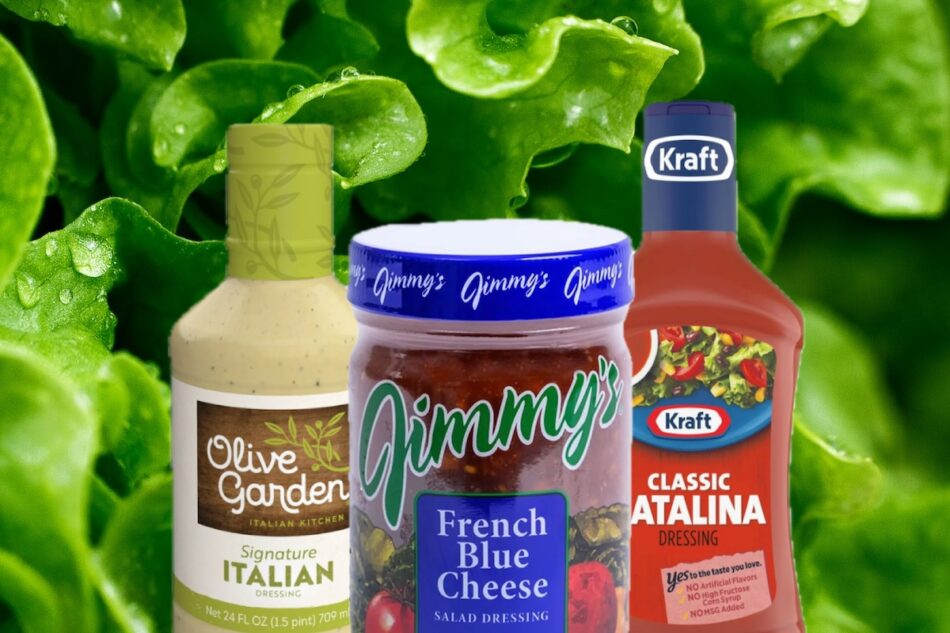A good dressing can instantly enhance your salad, but depending on which one you choose, it could put the healthiness of your dish at risk. “Many store-bought dressings are loaded with added sugars, unhealthy fats, and high levels of sodium,” says Lauren Manaker MS, RDN, LD, Charleston-based registered dietitian.
A salad is supposed to be a smart choice for health-conscious consumers, but it’s unbelievably easy to quickly turn it into a calorie bomb with just a few tablespoons of dressing. Before adding a salad dressing to your shopping cart, here’s a few things to take note of.
Saturated fat: Saturated fat is something you’ll often find in salad dressing. According to the American Heart Association, if you’re following a 2,000-calorie-a-day diet, you should not have more than 13 grams of saturated fat. Too much can lead to serious health issues like high cholesterol and heart disease.
Sodium: Many salad dressings are loaded with salt for flavor. While it might be tasty, you’re risking your heart. The American Heart Association says too many Americans consume more salt than recommended. The organization suggests having no more than 2,300 milligrams a day, but many people have 3,500mg daily.
Sugar: According to the American Heart Association, women shouldn’t have more than 6 teaspoons of sugar a day, which is around 100 calories, and for men, no more than 9 teaspoons or 150 calories per day.
When shopping for a salad dressing here’s other things to watch for, according to Manaker.
-When choosing a dressing, it is important to check the ingredient list and nutrition label. Look for dressings with minimal added sugars, healthy fats like olive oil or avocado oil, and no added sugar.
-Avoid those that contain trans fats, excessive preservatives, or artificial flavors.
-However, it’s also important to keep perspective– if you’re eating a nutrient-dense salad packed with vegetables, lean proteins, and whole grains, adding a small amount of less healthy dressing is unlikely to offset the overall health benefits of the meal. Moderation and awareness are key.
With that in mind, here are seven of the unhealthiest salad dressings to avoid, according to dietitians ranked from bad to worst.
Jimmy’s Original Sweet and Sour Dressing
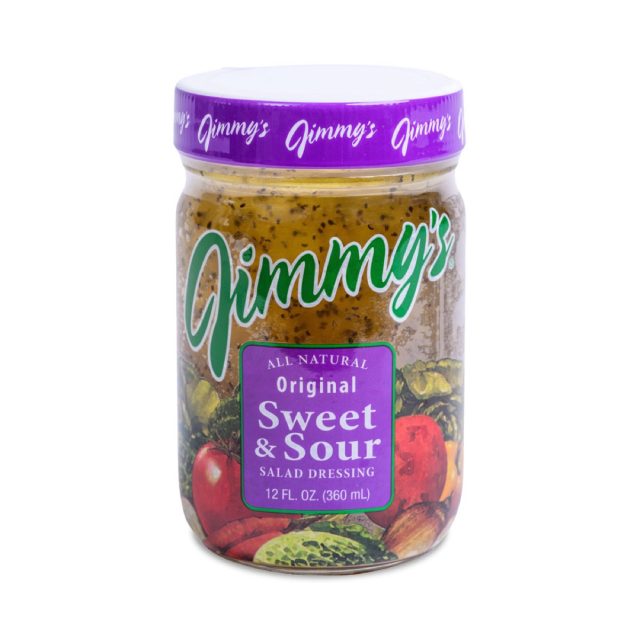

Nutrition: per serving 2 tbsp
Calories: 130
Fat: 10g (Saturated fat: 1.5g)
Sodium: 160mg
Carbs: 11g (Fiber: 0g , Sugar: 11g)
Protein: 0g
Jimmy’s Original Sweet and Sour Dressing delivers a tangy punch that’s great on salads, but also meat and fish. While it’s delicious, it’s full of sugar.
“This dressing contains a whopping 11 grams of added sugar, which is significant,” Manaker notes. “The American Heart Association recommends limiting the amount of added sugar consumed daily to promote better health.”
Despite its high sugar content, it’s lower in sodium and fat than others on our list.
Olive Garden Signature Italian


Nutrition: per serving 2 tbsp
Calories: 80
Fat: 8 g (Saturated fat: 1.5 g)
Sodium: 540mg
Carbs: 2g (Fiber: 0g , Sugar: 2g)
Protein: 0g
There’s no denying at the Olive Garden Signature Italian is creamy, tasty and bursting with flavor. But it’s not dietitian approved.
“Italian dressing can be made with simple ingredients, and this one didn’t get the memo,” says Manaker. “Between emulsifiers like xanthan gum and added colors, you may be better off just mixing oil and vinegar and pouring that on your salad.”
Wish-Bone Creamy Caesar


Nutrition: per serving 2 tbsp
Calories: 100
Fat: 11g (Saturated fat: 2g)
Sodium: 280mg
Carbs: 2g (Fiber: 0g , Sugar: .5g)
Protein: 0g
Wish-Bone Creamy Caesar offers a rich and indulgent flavor, but “it’s a nutritional minefield,” Mary Sabat MS, RDN, LD says.
“It starts with water and soybean oil, meaning the bulk of the dressing comes from inflammatory, highly processed fat,” she explains. “From there, it piles on sugar, modified starches, and preservatives like sodium benzoate, potassium sorbate, and calcium disodium EDTA—ingredients that serve shelf life more than your health.”
Sabat adds, “It also contains monosodium glutamate (MSG), polysorbate 60, and artificial flavorings that are far removed from a clean, whole-food ingredient list. Even the parmesan cheese and anchovies are masked by gums, additives, and synthetic stabilizers. This is far from a classic Caesar and more like a chemistry experiment in a bottle.”
Marzetti Sweet Italian Dressing
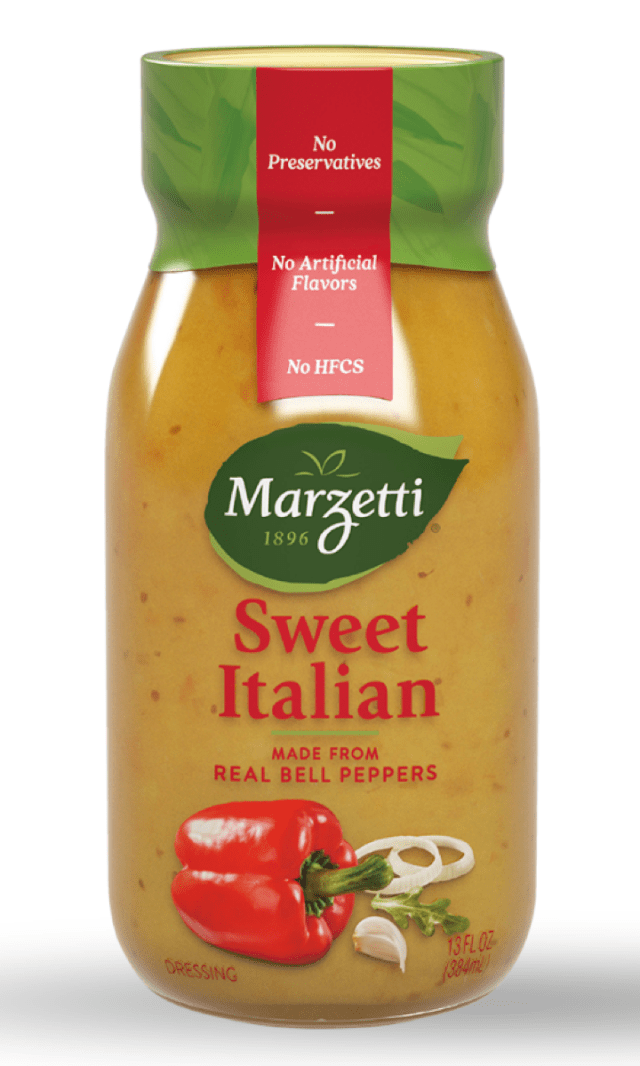

Nutrition: per serving 2 tbsp
Calories: 140
Fat: 12g (Saturated fat: 2g)
Sodium: 260mg
Carbs: 7g (Fiber: 0g , Sugar: 7g)
Protein: 0g
Marzetti’s Sweet Italian Dressing is advertised as free of artificial flavors and high-fructose corn syrup, but it still contains worrisome ingredients.
“Soybean oil—the primary ingredient—delivers a heavy dose of omega-6 fats that promote inflammation when consumed in excess,” says Sabat. ” The second and third ingredients are water and sugar, meaning this dressing is mostly oil and sweetener, not the herbs and spices you’d expect from an Italian recipe.”
She adds, “Despite having no preservatives, it includes xanthan gum as a thickener and beta carotene for color enhancement—both signs of a processed food product. With 7 grams of added sugar and 260 mg of sodium, this dressing turns a salad into a hidden source of unhealthy fats and empty carbs.”
Kraft Classic Catalina Dressing
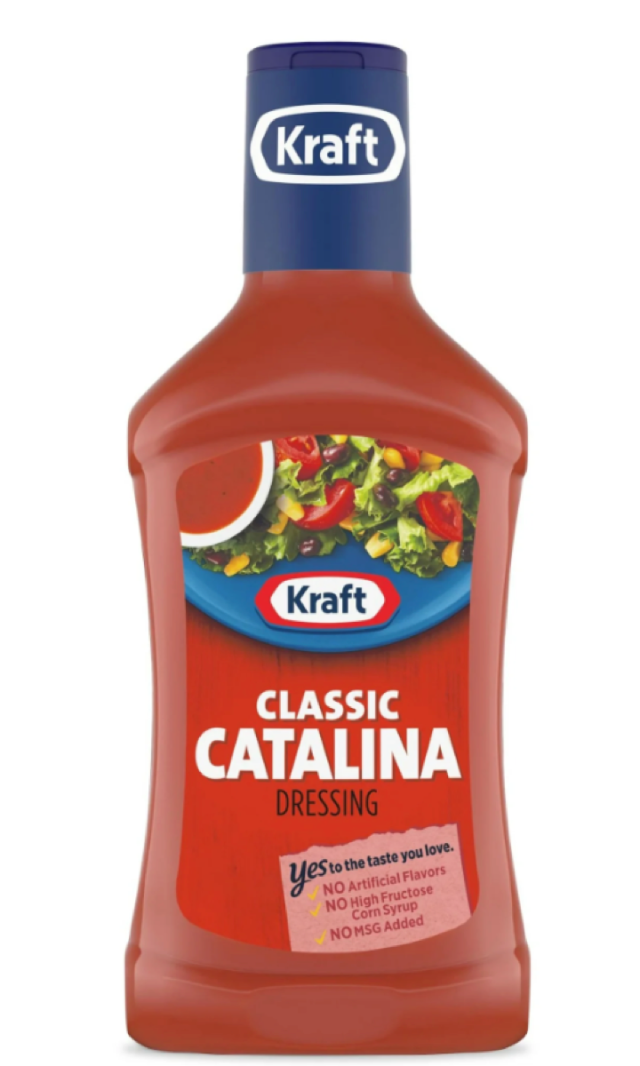

Nutrition: per serving 2 tbsp
Calories: 90
Fat: 6g (Saturated fat: 1g)
Sodium: 320mg
Carbs: 9g (Fiber: 0g , Sugar: 8g)
Protein: 0g
Kraft Classic Catalina Dressing can spruce up a salad, but it can also make it completely unhealthy for several reasons.
“Kraft Classic Catalina Dressing is a prime example of how a salad dressing can completely sabotage your healthy meal,” says Sabat . “The first ingredient is sugar, meaning it’s the most abundant component by weight—far more than even the tomato base or oil. That alone is a red flag. The dressing is also made with soybean oil, a highly processed seed oil known to promote inflammation and oxidative stress. It’s thickened with gums like xanthan and guar, which are often used in ultra-processed foods to mimic creaminess but offer no nutritional value.”
She explains, “The addition of artificial dyes (Red 40, Blue 1) and preservatives like potassium sorbate and EDTA makes this product not just unhealthy, but potentially irritating to those sensitive to food additives. Despite being low in calories per serving, its high sodium and added sugars make it a metabolic trap.
Jimmy’s French Blue Cheese
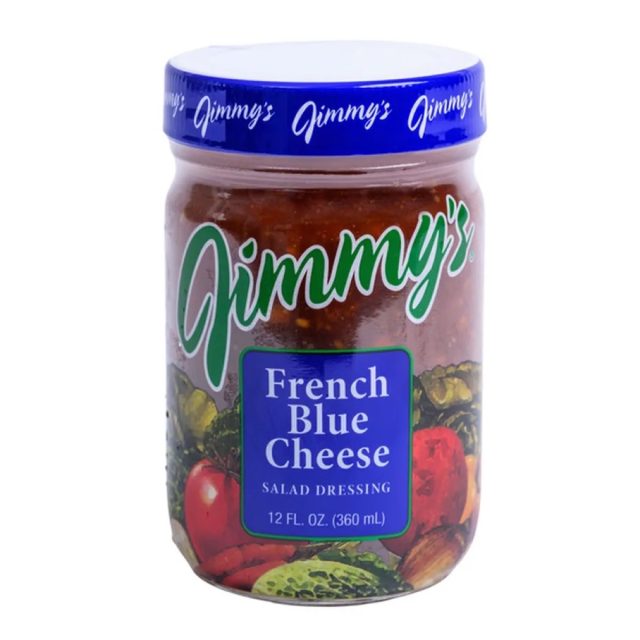

Nutrition: per serving 2 tbsp
Calories: 130
Fat: 10g (Saturated fat: 2g)
Sodium: 230mg
Carbs: 9g (Fiber: 0g , Sugar: 8g)
Protein: 1g
Jimmy’s French Blue Cheese is full of problematic ingredients, with high fructose corn syrup being the first one and Manaker doesn’t approve.
“This dressing contains 10% DV of sodium and 8 grams of sugar, both of which may contribute to health concerns when consumed in excess,” she says. “It is also made with high fructose corn syrup, which is a commonly used sweetener linked to potential health risks, including weight gain and increased blood sugar levels when overconsumed.”
Ken’s Steakhouse Thousand Island


Nutrition: per serving 2 tbsp
Calories: 140
Fat: 14g (Saturated fat: 2g)
Sodium: 240mg
Carbs: 4 g (Fiber: 0g , Sugar: 4g)
Protein: 0g
If you’re trying to make healthy choices, Ken’s Steakhouse Thousand Island is a dressing to skip.
“It’s a heavy, processed blend of inflammatory ingredients and synthetic additives that make it a poor choice for any salad,” says Sabat. “Soybean oil, the first ingredient, dominates the formula and contributes to an unfavorable omega-6 to omega-3 fatty acid ratio, fueling inflammation. It also contains added sugar and sweet pickle relish, which increase the sugar load unnecessarily.”
Sabat adds, “The ingredient list is packed with preservatives like potassium sorbate, sodium benzoate, and calcium disodium EDTA, as well as thickening agents like propylene glycol alginate and xanthan gum—common in ultra-processed foods. Lastly, dried onion and garlic, natural flavors, and oleoresin paprika (a processed colorant) round out this highly artificial dressing. The macros may not look extreme on paper, but the ingredient quality makes it one of the worst options for health-conscious consumers.”

